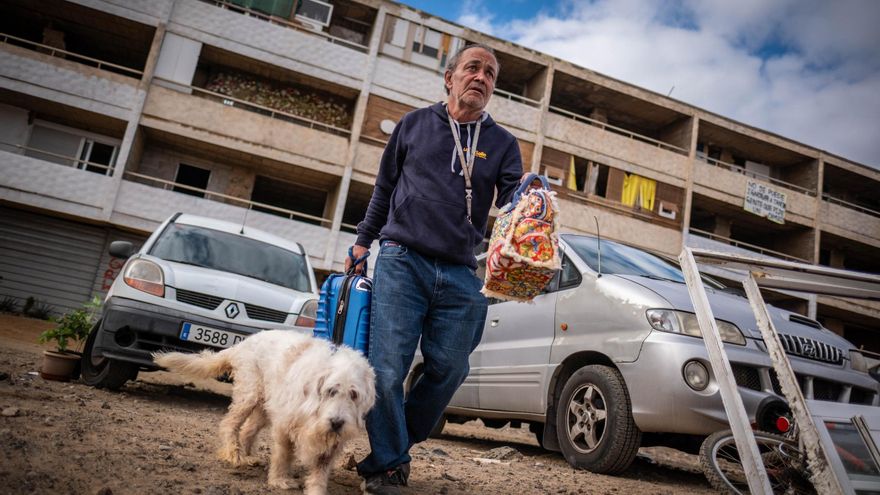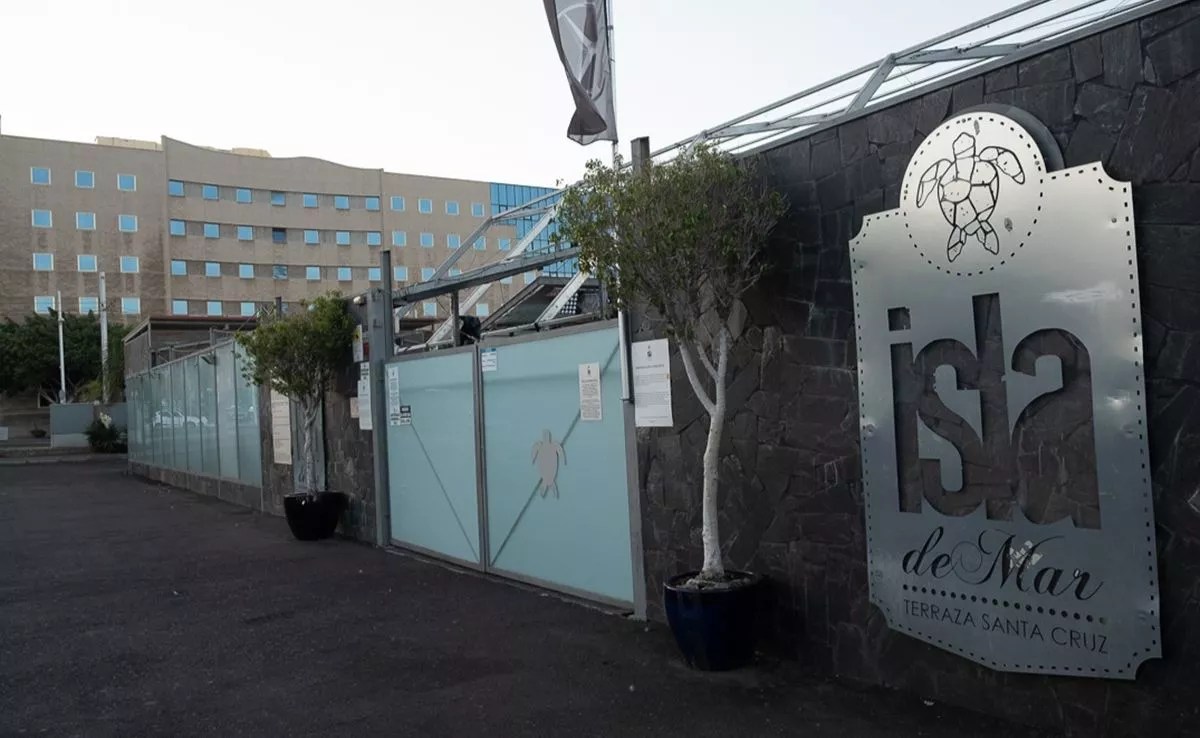
Seated in a chair and surrounded by a few possessions, Miguel watches his former neighbors removing belongings. Born in Madeira 63 years ago, he has been in Tenerife for two decades. Today, he finds himself on the brink. “They are going to throw 200 people onto the streets and say there is no solution, but there is,” he asserts. A tear falls. “They say there is no solution; this is the solution: the street,” he insists firmly, speaking in Spanish that reflects his Portuguese roots. He stands up and sits back down. He says he is nervous. And he gazes back at the building, a mix of absorption and sorrow.
A few minutes past 9:00 am, the Chasna Building, on the street of the same name in Costa del Silencio (Arona), was gearing up for one of the most massive evictions ever recorded in Tenerife: 210 people, 90 families, 44 homes. Among them, babies, senior citizens, and disabled individuals. It is a partially constructed building, previously occupied and deemed at risk of collapse by a municipal report in 2021. A judicial order had set 9:30 am as the definitive eviction time.
Dozens of members of the Civil Guard were deployed early in the day on the embankment where the building stands. Signs hanging on the facade read “The fight of a few is worth the future of all,” “The street is not a place to live,” “Stop evictions of vulnerable individuals,” and “All we want is a home for our children.” Some hoped for an extension, especially after Arona City Council stated to the Efe news agency on Monday that they were working in extremis to find a solution.
“Are you going to make a smoothie or what?” one man asked another leaving with a blender in hand. As the designated time approached, some residents, seeing the situation, began to move their belongings. One affected individual appeared outside with a sink under his arm. Mattresses, suitcases, gas canisters, trash bags with clothing… were piled up in the vicinity. Later, a loud thud echoed on the ground of soil and stones: a young man had dropped the gearbox of a car he needed to store in a home. Numerous solar panels caught the eye, the system the occupiers had used to generate electricity.
The morning’s initial stages passed without major incident. Tempers began to flare when, after 9:30 am, the judicial entourage arrived. Shouts and some insults directed at the court officials and Civil Guards. “Bitches” was one of the insults repeated most frequently. Primarily uttered by a middle-aged man who spent much of the eviction blurting out whatever came to mind.
This last detail may offer a good reflection of the complex reality with numerous facets present at the scene. A building at risk of collapse, the perennially controversial issue of occupation, individuals left without a roof over their heads, a lack of social solutions, and broader yet crucial factors, such as the increasing rental problem and population growth. As is common in such cases, intertwined personal narratives unfolded: some with compelling and distressing stories, others with shades of ambiguity.
Two elements stood out in the accounts: complaints about the soaring rental prices and criticism of the Arona mayor, Fátima Lemes, and her absence on this Tuesday. And what did the local mayor have to say? “Since the moment we became aware of this issue, we have endeavored to find solutions to this serious housing problem that repeats itself weekly,” she stated in a phone interview with this newspaper. The mayor emphasized that “it is a building that could collapse at any moment” and that “people’s lives take precedence over any social need,” and assured that they are “handling each case individually” to find a solution.
Building entrance
[–>
After the removal of more belongings, the Civil Guard took positions and entered the building. Door by door, accompanied by a locksmith, they began to unlock. “Watch out!, something bad could happen later and they won’t show up,” someone shouted at them. Those who had occupied the homes observed the operation from the nearby mountainside. “It cost me some money but it’s good,” one man half-celebrated as a door posed a challenge for the authorities.
A couple of families, like that of Hilda Daniela Garzón and Nora Elena, both Colombians, stated they would remain on the embankment outside the building, hoping for some form of assistance. Cuban individuals, employed in a southern banana plantation, moved around uncertain of where to go. Juan José claimed to be left on the street with his dog. And Miguel, the Madeiran man envisioning a bleak future, continued seated in his chair, gazing at the building as if peering into the horizon.
















